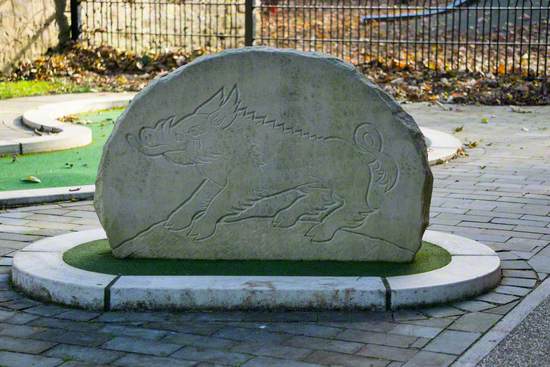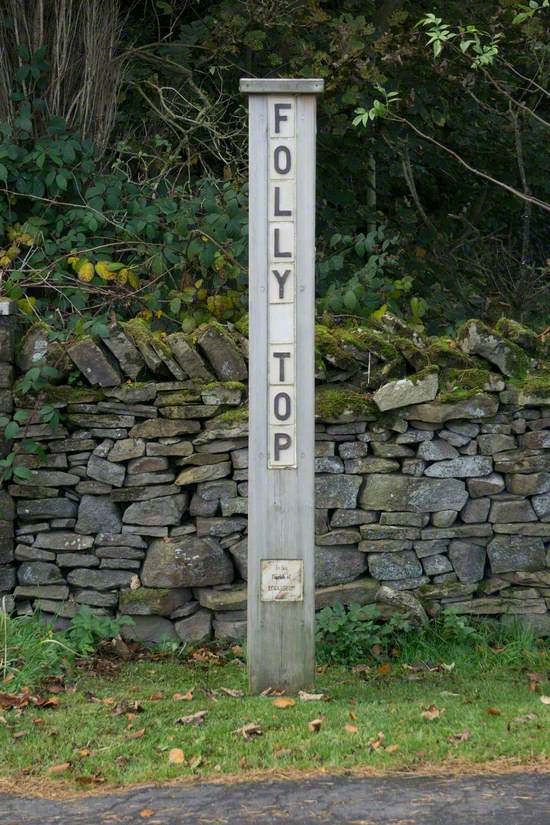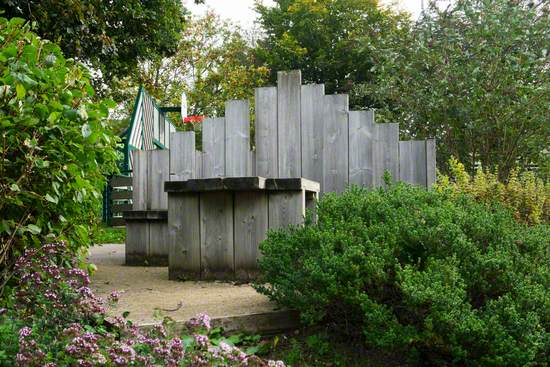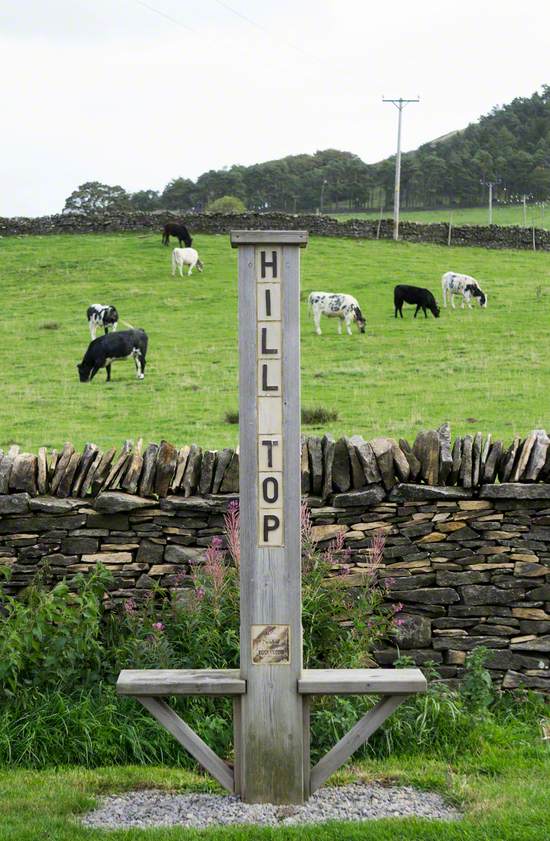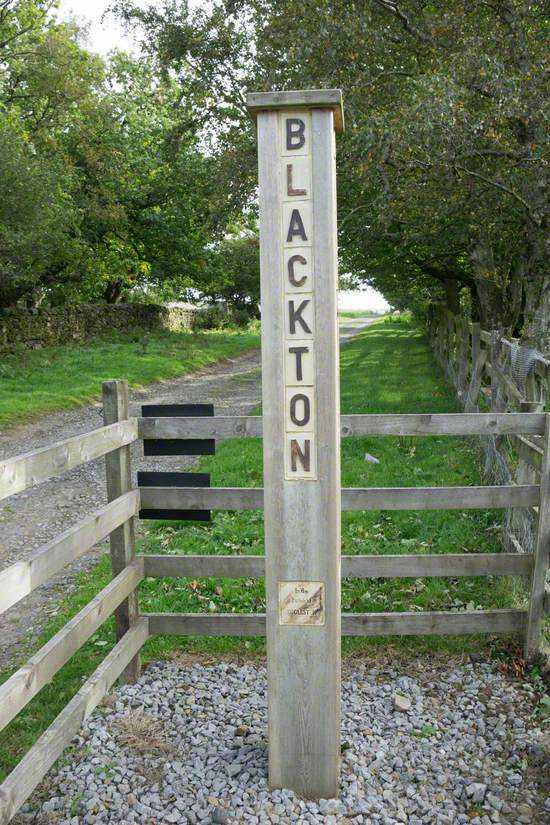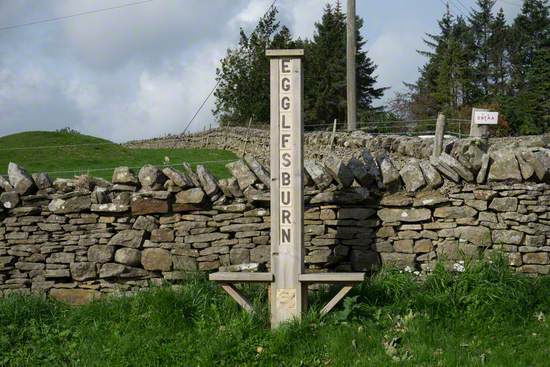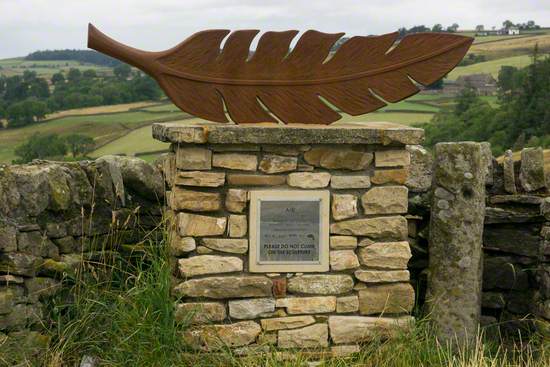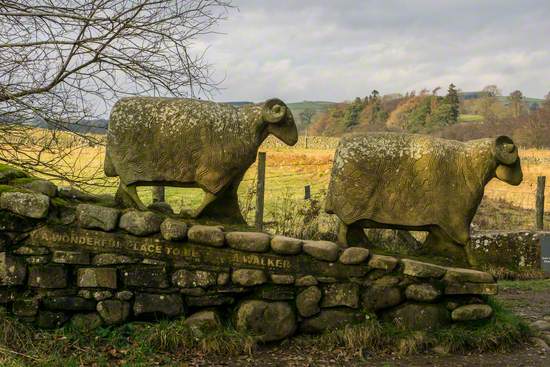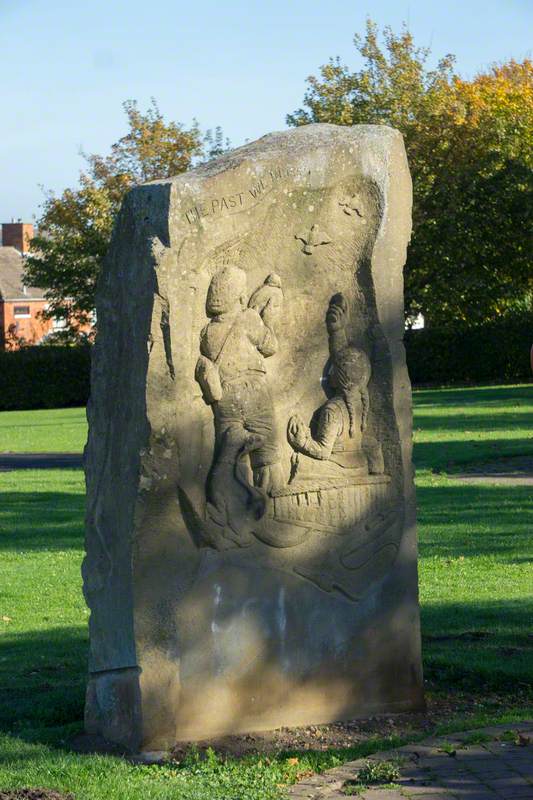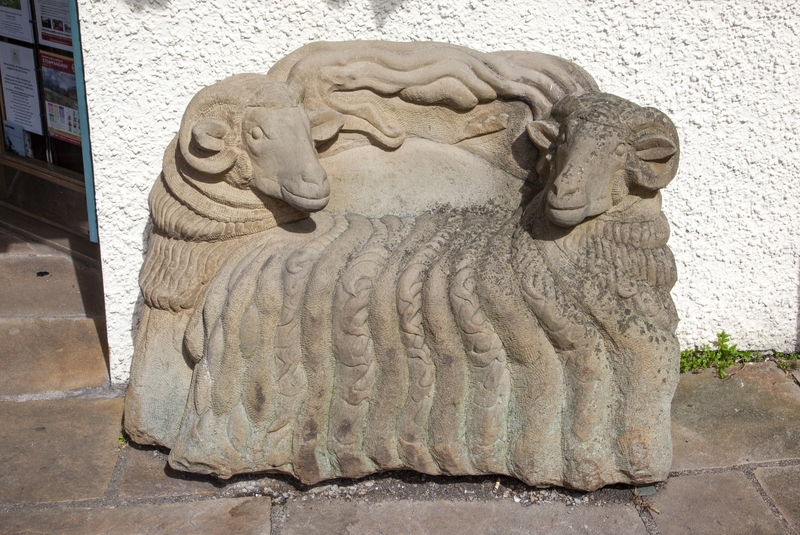This sculpture trail is geographically ordered, commencing from Barnard Castle and travelling the length of Teesdale. The trail is within the North Pennines Area of Outstanding Natural Beauty (AONB) and is routed to take in a variety of sculptural installations, in the main works by locally based sculptor Phil Townsend, but also including pieces by artists Keith Alexander and Victoria Brailsford.
The trail can be completed on a drive through Teesdale or as a round trip. Either way, there is a short detour into Eggleston to take into account. Most of the works can be seen from the roadside, others are a little off the road.

© the copyright holder. Image credit: Elaine Vizor / Art UK
Through Time Clock (and Two Markers)
2005
Philip Townsend (b.1947)
Dunhouse Buff sandstone
H 200 x W 100 x D 38 cm
If you have an eye for a timeline this will take you back
Geological Time, a three-part sculpture attempts to give an idea of the vastness of geological time. The sandstone block is carved on its rough, rear side to show giant versions of locally found fossils, on its other smooth side are inset ceramic tiles naming geological periods. There are two peepholes in the stone (for both child and adult heights) which take the eye to two distant markers. The nearer one is 57 metres away, and it marks the ‘Beginning of Fossil Life’ c.570 million years ago, on a scale where each metre walked equals 10 million years. The other marker post (painted white) can be seen over a quarter of a mile beyond it, and on the same timescale represents the 'Big Bang', when the universe is thought to have begun.
